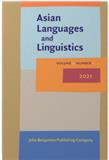
亚洲语言与语言学(英文)(Asian Languages and Linguistics)(国际刊号)
- AMI入库
- 主管单位:
- 主办单位:
北京师范大学人文和社会科学高等研究院
- 国际刊号:
2665-9336;E-ISSN 2665-9344
- 国内刊号:
- 学科分类:
- 字数:
-
- 有无基金:
- 周期:
国际号刊-半年刊
- 特殊属性:
外文期刊
- 电话:
- 邮箱:
jall@bnuz.edu.cn(官网邮箱)
- 复合因子:
0
- 综合因子:
0
- 收录:
- 级别:
AMI入库
期刊简介
《亚洲语言与语言学》期刊已被查看: 次
更新频次
单位占比
一作占比
投稿指南
1、该刊只有国际刊号。
2、投稿方式:在线投稿。
3、官网网址:https://benjamins.com/catalog/alal
4、投稿系统:https://www.editorialmanager.com/alal/
5、主办单位网址:
https://rsgyy.bnu.edu.cn/yjjg/yykxyjzx/yzyyyyyxbjb_20200724114038991173/index.html
(北京师范大学人文和社会科学高等研究院)
6、官网邮箱:jall@bnuz.edu.cn
7、出刊日期:半年刊,一年出版2期。
2021年9月27日星期一
《亚洲语言与语言学(英文)》
(Asian Languages and Linguistics)期刊简介
【北京师范大学人文和社会科学高等研究院官网信息】
《亚洲语言与语言学》(Asian Languages and Linguistics,简称ALAL)为北京师范大学和欧洲约翰·本杰明出版社联合出版的语言学英文半年刊。北京师范大学人文和社会科学高等研究院为主办方,约翰·本杰明出版社(John Benjamins Publishing Company)为出版方。期刊于2020年3月出版创刊号,每半年出版1期,每期200页。本刊供所有读者免费下载阅读。具体内容请参见:http://benjamins.com/catalog/alal.1.1
《亚洲语言与语言学》旨在介绍对亚洲语言进行描写与理论分析的高质量研究,涉及主题广泛,包括但不限于:
1)对任何亚洲语言句法、语义、音系、词法和语用的理论研究,以及相关交互和接口研究,如句法-语义接口和句法-形态接口等。
2)对于亚洲各语言之间,或亚洲语言与其他语言之间结构多样性和跨语言变异的类型学研究。研究需为基于实际语料的研究或(遵循任何框架的)理论研究。
3)基于历史语言学理论方法,对亚洲语言事实进行详细分析的历时性研究,以及将历史语言学与语料库、语言变异和类型学结合起来的跨领域研究。
4)有助于理解亚洲语言的跨学科研究,如语言学与哲学、心理学、语言处理等领域的交叉研究。尤其欢迎跨语言比较以及类型学视角下的研究成果。
联合主编
Danqing Liu 刘丹青
Institute of Linguistics, CASS 中国社会科学院语言研究所
中国社会科学院研究员,国家语言文字工作委员会委员。
Ailan Fu 傅爱兰
Beijing Normal University北京师范大学
北京师范大学教授,北京师范大学珠海校区管委会副主任,人文和社会科学高等研究院执行院长,语言科学研究中心主任。
Gong Cheng 程工
Zhejiang University 浙江大学
浙江大学教授,浙江大学外国语言文化与国际交流学院院长。浙江省“万人计划”人文社科领军人才,浙江大学文科领军学者。
征稿启事
Asian Languages and Linguistics is a peer reviewed forum for high-quality linguistic research on Asian languages. Only English papers are accepted. We welcome original papers within the aim and scope of the journal. For further information on the journal, detailed submission guidelines, tables of contents, abstracts, and access to the free sample copy, please visit the website: benjamins.com/catalog/alal.
Any inquiries should be directed towards the assistant editor Dr. Xiaoyu Lu at jall@bnuz.edu.cn.
期刊实行双向匿名审稿制,只刊登英文论文,发表所需格式要求及各期内容,请参看出版社刊物主页:benjamins.com/catalog/alal。
投稿及问题咨询,请联系编辑部主任卢笑予博士;邮箱:jall@bnuz.edu.cn。
《亚洲语言与语言学(英文)》
(Asian Languages and Linguistics)作者投稿指南
【官网信息】
SUBMISSION GUIDELINES FOR CONTRIBUTORS
General
For the benefit of production efficiency, the publisher and the editor ask you to follow the following submission guidelines strictly. Papers that do not follow these guidelines will be returned to the author.
Contributions should be consistent in their use of language and spelling. If you are not a native speaker of English it is advised to have your text checked by a native speaker.
When submitting the final manuscript to the journal, please include: a one-paragraph abstract, approximately five keywords, and a current mailing address.
Electronic files
Files. Contributions should not exceed 10,000 words. They should be in English following the American Psychological Association (APA) style.
Please take care that you supply all the files, text as well as graphic files, used in the creation of the manuscript, and be sure to submit the final version of the manuscript. And please delete any personal comments so that these will not mistakenly be typeset and check that all files are readable.
File naming conventions. When naming your file please use the following convention: use the first three characters of the first author’s last name; if that name is Johnson, the file should be named JOH.DOC, JOH.WP5, etc. Do not use the three character extension for things other than the identification of the file type (not JOH.ART, JOH.REV). Figures can be named as follows JOH1.EPS, JOH2.TIF, JOH3.XLS, etc.
Software. Word (PC/Mac) is preferred. If you intend to use other word processing software, please contact the editors first.
Graphic files: Please supply figures as Encapsulated Postscript (EPS) or Tagged Image File Format (TIFF) conversion in addition to the original creation files.
Lay-out
In order to facilitate smooth production, it is important that you follow the journal’s style for consistency.
Do not add running heads. Formatting that should be supplied by you is the formatting of references (see below) and font enhancements (such as italics, boldface, caps, small caps, etc.) in the text.
Whatever formatting or style conventions are employed, please be consistent.
Tables and figures. All tables, trees and figures must fit within the following page size (if necessary, after – limited – reduction) and should still be legible at this size:
11.5 cm (4.52”) x 19 cm (7.48”).
Suggested font setting for tables: Times Roman 10 pts (absolute minimum: 8 pts).
Tables and figures should be numbered consecutively, provided with appropriate captions and should be referred to in the main text in this manner, e.g., “in table 2”, but never like this “in the following table:”. Please indicate the preferred position of the table or figure in the text.
Running heads. Please do not include running heads with your article. However, in case of a long title please suggest a short one for the running head (max. 55 characters) on the cover sheet of your contribution.
Emphasis and foreign words. Use italics for words in languages other than English as well as for foreign language, highlighting and emphasis. Boldface should be used only for highlighting within italicized stretches and for headings. Please refrain from the use of FULL CAPS (except for focal stress and abbreviations) and underlining (except for highlighting within examples, as an alternative for boldface), unless this is a strict convention in your field of research. For terms or expressions (e.g., ‘context of situation’) please use single quotes. For glosses of citation forms, use double quotes.
Transliteration. Please transliterate into English any examples from languages that use a non-Latin script, using the appropriate transliteration system (ISO or LOC).
Symbols and special characters. In case you have no access to certain characters, we advise you to use a clear convention to mark these characters.
Section headings . Articles should be reasonably divided into sections and, if necessary, into subsections. Please mark the hierarchy of subheadings as follows:
Heading 1 = bold, two lines space above and one line space below.
Heading 1.1 = normal, one line space above and one line space below.
Heading 1.1.1 = italics, one line space above, text on new line.
Heading 1.1.1.1 = italics, one line space above, text on new line. NB. This level is only to be used if absolutely indispensable.
Quotations: In-text quotations should be given in double quotation marks. Quotations longer than 3 lines should be indented left and right, without quotation marks and with the appropriate reference to the source. They should be set off from the main text by a line of space above and below.
Listings: Should not be indented. If numbered, please number as follows:
1...................... or a. .......................
2...................... or b. .......................
Listings that run on with the main text can be numbered in parentheses: (1).............., (2)............., etc.
Examples and glosses
Examples should be numbered with Arabic numerals (1,2,3, etc.) in parentheses.
Examples in languages other than English should be in italics with an approximate translation. Between the original and the translation lines, a line with glosses (and in cases of more ‘exotic’ languages, a line containing a morphemic breakdown) can be added. This interlinear gloss gets no punctuation and no highlighting. For the abbreviations in the interlinear gloss, CAPS or small caps can be used, which will be converted to small caps by our typesetters in final formatting.
Please note that lines 1 and 2 are lined up through the use of spaces: it is essential that the number of elements in lines 1 and 2 match. If two words in the example correspond to one word in the gloss use a full stop to glue the two together (2a). Morphemes are separated by hyphens (1, 2b).
Every next level in the example gets one indent/tab.
(1) Kare wa besutoseraa o takusan kaite-iru.
he TOP best-seller ACC many write-PERF
“He has written many best-sellers.’”
(2) a. Jan houdt.van Marie.
Jan loves Marie
“Jan loves Marie.”
b. Ed en Floor gaan samen-wonen.
Ed and Floor go together-live.INF
“Ed and Floor are going to live together.”
Notes
Notes should be kept to a minimum and should be submitted as numbered footnotes.
***Note: footnote indicators in the text should appear at the end of sentences and follow punctuation marks.
References
It is essential that the references are formatted to the specifications given in these guidelines, as these cannot be formatted automatically. Please use the reference style as described in The APA Publication Manual (7th ed.).
The publisher location should not be included in the reference.
Please make sure that in the reference list the given names should not be abbreviated. Especially for Chinese and Korean names, this removes much of the information.
References in the text: These should be as precise as possible, giving page references where necessary; for example (Clahsen, 1991, p. 252) or: as in Brown et al. (1991, p. 252). All references in the text should appear in the references section.
References section: References should be listed first alphabetically and then chronologically. The section should include all (and only!) references that are actually mentioned in the text.
Authors/contributors are encouraged to supply – with a reference, not instead of – the DOI if they happen to have that information readily available.DOIs should be formatted the same as URLs. https://doi.org/10.1080/02626667.2018.1560449
Examples
Book:
Görlach, Manfred (2003). English words abroad. John Benjamins.
Spear, Norman E., & Miller, Ralph R. (Eds.). (1981). Information processing in animals: Memory mechanisms. Lawrence Erlbaum.
Article (in book):
Adams, Christopher A., & Dickinson, Anthony (1981). Actions and habits: Variation in associative representation during instrumental learning. In Norman E. Spear & Ralph R. Miller (Eds.), Information processing in animals: Memory mechanisms (pp. 143-186). Erlbaum.
Article (in journal):
Claes, Jeroen, & Ortiz López, Luis A. (2011). Restricciones pragmáticas y sociales en la expresión de futuridad en el español de Puerto Rico [Pragmatic and social restrictions in the expression of the future in Puerto Rican Spanish]. Spanish in Context, 8, 50–72.
Rayson, Paul, Leech, Geoffrey N., & Hodges, Matthew (1997). Social differentiation in the use of English vocabulary: Some analyses of the conversational component of the British National Corpus. International Journal of Corpus Linguistics, 2(1), 120–132.
Additional Style Guidance
Please use in-text citations, numbered footnotes, and works cited.
1. Please do not justify the right margin of your manuscript. Leave a ragged right margin.
2. Please double space everything, including quotations and footnotes.
3. Please use American or British spellings throughout.
4. Section headers, if used, should simply be phrases with no numbers. Please restrict headers to three or four per essay. They may be italicized.
5. Miscellaneous
·indicate a new paragraph with a single tab
·set off any introductory phrase of five words or more with a comma, e.g. “Toward the end of World War II,...”
·dates should be of the form “15 December 1998”
·decades should be of the form “the 1980s”
·spell out centuries, e.g., “eighteenth century”
·at first mention of an author in your text, provide the full name, e.g., “Anne Ross...”; all following in-text references should use only the last name
·use “and” in place of “&”, and “see” in place of “cf.”
·use minimal capitalization, e.g., “translation studies”, “the Roman Catholic church”;
·use minimal hyphenization, e.g., “postcolonial”
·possessives of names ending in “s” should take the form of “Yeats's”
·please avoid inappropriately gendered language, finding locutions as well that avoid awkward forms like “his/her” whenever possible
·represent dashes as two hyphens, no spaces, e.g., “despite the difficulty--however great.”
Appendixes
Possible appendixes should follow the References section.
Author’s Submission Checklist
When submitting the revised version of your accepted manuscript, in addition to following the guidelines above, please be sure that you also include:
·a one-paragraph abstract of your article
·a list of approximately five keywords to aid in searching and indexing
·a mailing address (postal + e-mail)
SUBMISSION
Asian Languages and Linguistics offers online submission. Manuscripts should be submitted electronically through the journal’s online submission and manuscript tracking site.
All articles published in ALaL are peer reviewed. Please make sure that the files you submit do not reveal your identity (as part of the text, the references or in the document properties).
Please consult the guidelines and the Short Guide to EM for Authors before you submit your paper.
If you are not able to submit online, or for any other editorial correspondence, please contact the editors via e-mail: jall@bnuz.edu.cn
上一篇:中国文化产业评论(集刊)下一篇:浙江艺术职业学院学报(不收版面费审稿费)
《亚洲语言与语言学》同类语言文字期刊
-
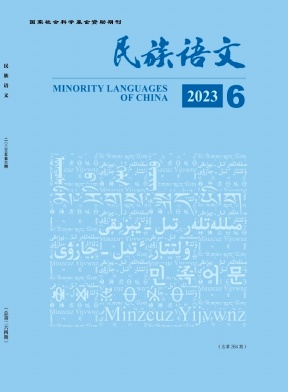
民族语文(不收版面费审稿费)
C刊,北核,AMI核心,武B+
CN中文-双月刊影响因子0.636
-
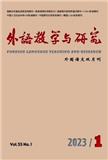
外语教学与研究(不收版面费)
AMI权威,C刊,北核,科核,武A+,国社科-合格
CN中文-双月刊影响因子2.145
-
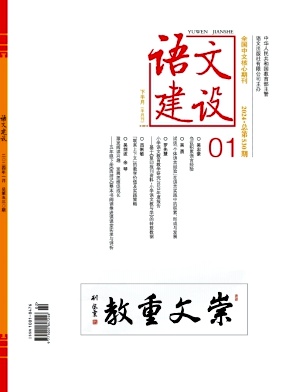
语文建设(不收版面费审稿费)
北核,AMI扩
CN中文-半月刊影响因子1.274
-
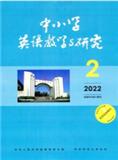
中小学英语教学与研究(不收版面费审稿费)
北核
CN中文-月刊影响因子0
-
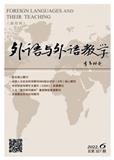
外语与外语教学(不收版面费审稿费)
C刊,北核,科核,AMI核心,武A
CN中文-双月刊影响因子2.483
-
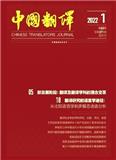
中国翻译(不收版面费审稿费)
C刊,北核,科核,AMI核心,武A
CN中文-双月刊影响因子3.156
-
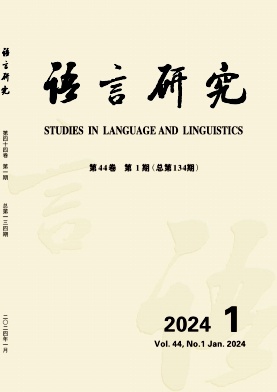
语言研究(不收版面费审稿费)
C刊,北核,科核,AMI扩,武B+
CN中文-季刊影响因子0.576
-
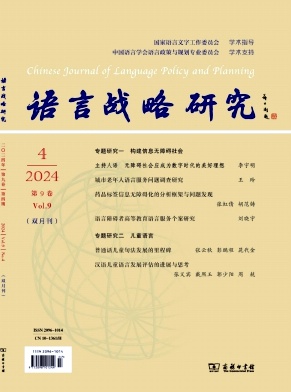
语言战略研究(不收版面费审稿费)
C刊,北核,武A,AMI扩
CN中文-双月刊影响因子2.785
常见问题
-
亚洲语言与语言学杂志社官网、联系方式是什么?
亚洲语言与语言学杂志社官网:https://benjamins.com/catalog/alal
投稿网址:https://www.editorialmanager.com/alal/
投稿邮箱:jall@bnuz.edu.cn(官网邮箱) -
亚洲语言与语言学杂志是核心期刊么?
亚洲语言与语言学是核心期刊,级别是:AMI入库, 是:语言文字分类下的
-
请问你们是亚洲语言与语言学杂志社吗?
我们不是《亚洲语言与语言学》杂志社。本站主要从事期刊信息展示与期刊推荐,不是任何杂志官网,直投稿件请联系杂志社。本站仅提供免费的学术指导、论文辅导、期刊投稿信息整理收集服务。
-
你们指导服务后可以保证文章被发表吗?
期刊发表的成功与否,主要取决于文章内容的质量。编辑老师会根据研究领域、创新性等多因素进行考量。我们会帮助您理解期刊的发表要求,助力提升发表几率,从而增加发表的机会。
-
晋级论文能否在报纸上发表?
在学术界,论文的发表往往被视为研究者职业发展的重要一环。晋级论文,即为了获得更高职称或学术地位而撰写的学术论文,通常需在专业期刊上发表。然而,许多人可能会问
